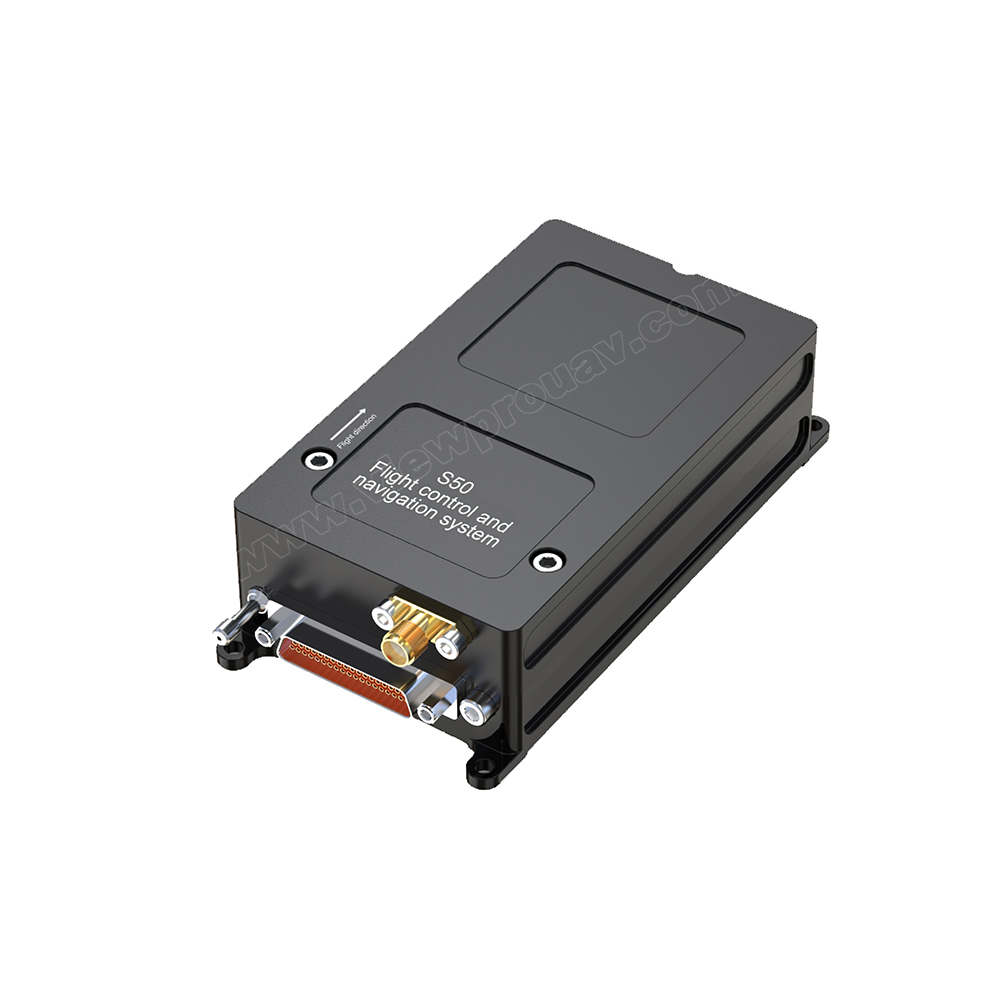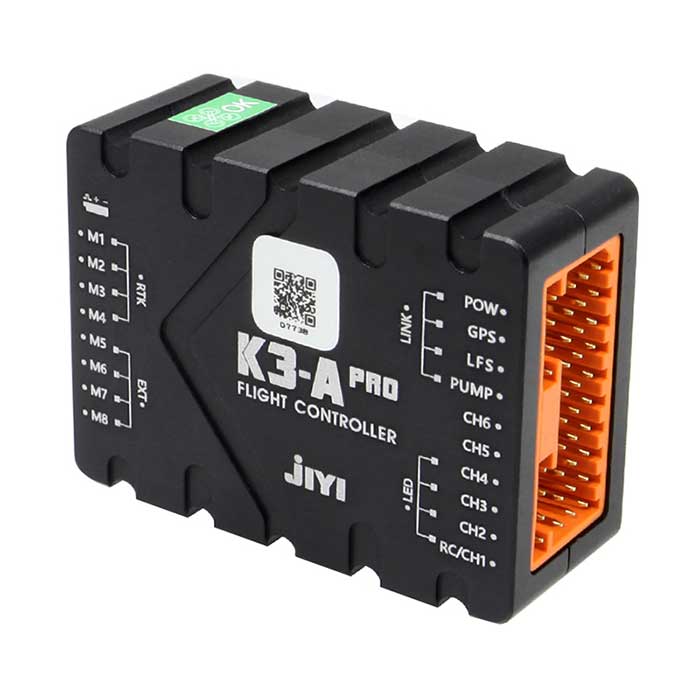SparkNavi Drone Flight Controller and GNSS/INS Made in Taiwan: Precision and Technology
Wiki Article
Checking Out the Role of Drone Trip Controllers in Enhancing Trip Stability and Navigation Performance
The innovation of drone modern technology has significantly enhanced the value of flight controllers, which offer as the brain of these airborne vehicles. By integrating real-time information from a range of sensors, trip controllers enhance trip security and navigation effectiveness, guaranteeing that drones can operate smoothly also in complicated atmospheres.
Recognizing Trip Controllers
Trip controllers are important parts in the performance of drones, working as the minds that take care of and support trip operations. These advanced tools process data from different sensors, consisting of accelerometers, gyroscopes, and GPS, to make sure that the drone preserves its designated flight path. The trip controller analyzes this information and carries out commands based on pre-defined formulas, allowing the drone to react to ecological modifications, such as wind or challenges.The main function of a flight controller is to keep security during flight. It accomplishes this by making real-time adjustments to the drone's electric motors and control surfaces, guaranteeing balance and control. Furthermore, contemporary flight controllers include sophisticated functions such as waypoint navigation, enabling automated flight courses and enhanced functional efficiency.
Recognizing the design of flight controllers is essential for both enthusiasts and specialists. They normally include a microcontroller, firmware, and different interfaces for sensing unit input and communication. As technology breakthroughs, trip controllers have ended up being more portable and capable, incorporating man-made knowledge to improve decision-making procedures and adjust to intricate flight scenarios. This advancement indicates a critical advancement in the drone sector, leading the way for a lot more sophisticated applications and more secure procedures.
Key Elements of Flight Security
Accomplishing optimum flight stability in drones depends on several crucial elements that operate in show to make sure controlled and smooth procedures. Central to this security is the flight controller itself, which processes data from different sensing units to keep the desired flight mindset. This includes accelerometers and gyroscopes that determine movement and alignment, enabling for real-time modifications to the drone's setting.One more essential part is the digital rate controllers (ESCs), which control the power delivered to the motors. By finely adjusting motor speeds in action to flight controller commands, ESCs aid preserve equilibrium and neutralize disturbances triggered by wind or unexpected movements.
In addition, the style of the drone's frame plays an essential function in flight stability. A well-structured frame reduces resonances and boosts the total aerodynamic profile, adding to smoother trip attributes. The assimilation of sophisticated formulas within the trip controller help in predictive adjustments, making certain a responsive and versatile flight experience.
With each other, these elements form a cohesive system that enhances a drone's stability, permitting specific maneuvering and boosted efficiency in various trip problems.
Navigation Effectiveness Strategies
Effectiveness in navigation is essential for maximizing drone operations, specifically in complicated environments. Efficient navigation strategies enhance the capability of drones to traverse challenging surfaces and stay clear of challenges, thus boosting operational efficiency and security.One noticeable strategy is the implementation of advanced GPS and inertial dimension systems (IMUs) that provide exact location tracking and alignment data. These innovations permit drones to determine optimum flight paths in real-time, taking right into account various aspects such as wind problems and potential challenges.
Another method entails the use of algorithms for course preparation and optimization. Algorithms such as A * and Dijkstra's algorithm can be released to establish the most effective course while reducing power consumption and flight time. Integrating equipment discovering designs can make it possible for drones to adaptively find out from their settings, improving navigating capacities via experience.

Effect on Autonomous Drones
The combination of sophisticated navigating strategies has actually profoundly transformed the capabilities of autonomous drones, enabling them to run with higher freedom and accuracy. SparkNavi drone flight controller and GNSS/INS made in taiwan. These improvements are primarily credited to innovative trip controllers that make use of real-time data handling and sensing unit blend, permitting drones to navigate complex environments seamlesslyThe influence on independent drones extends beyond mere navigating; it incorporates boosted challenge evasion, improved stability throughout dynamic problems, and boosted objective reliability. By leveraging formulas that include machine understanding and expert system, drones can adjust to altering circumstances, making informed choices that optimize their trip paths while decreasing threats.
Additionally, the application of durable flight controllers has actually assisted in the implementation of complicated tasks, such as airborne assessments, delivery solutions, and farming monitoring, with marginal human intervention. This capability not just improves procedures however also minimizes human mistake, consequently enhancing general security.
Consequently, the operational range of independent drones has expanded dramatically, making them important devices in numerous industries. Their ability to do successfully in diverse circumstances underscores the important function that progressed trip controllers play in forming the internet future of unmanned aerial systems.
Future Trends in Trip Control
Frequently, improvements in flight control modern technology are poised to redefine the landscape of drone procedures in the coming years. Arising trends suggest a considerable change in the direction of boosted artificial intelligence (AI) integration, allowing trip controllers to refine real-time information more efficiently. This development will certainly facilitate improved decision-making capabilities, permitting drones to adapt to vibrant ecological problems autonomously.Additionally, the execution of equipment discovering algorithms is expected to improve predictive maintenance, consequently lessening downtime and expanding the lifecycle Full Report of drone parts. This proactive approach to maintenance will be important as drone applications broaden across different markets, from agriculture to logistics.

.png)
Lastly, developments in safe interaction methods will certainly resolve safety and governing problems, making certain that drones can operate seamlessly in congested airspaces (SparkNavi drone flight controller and GNSS/INS made in taiwan). Collectively, these trends point in the direction of a future where trip control systems are not just smarter and extra reliable however also capable of running securely in a progressively integrated airspace
Conclusion
To conclude, drone trip controllers are essential to improving trip stability and navigation go to this web-site effectiveness via the sophisticated processing of sensing unit information. By keeping optimal trip attitudes and employing sophisticated algorithms for course optimization and obstacle avoidance, these controllers substantially add to the freedom and functional security of drones. As modern technology proceeds to evolve, even more improvements in trip control systems are prepared for, assuring better efficiency and increased abilities in the realm of unmanned aerial automobiles.
By incorporating real-time information from a variety of sensors, flight controllers improve trip security and navigating performance, making sure that drones can run efficiently even in complicated settings.Trip controllers are indispensable parts in the performance of drones, offering as the minds that take care of and maintain flight operations. Furthermore, contemporary flight controllers incorporate innovative attributes such as waypoint navigating, enabling for automated flight paths and enhanced functional efficiency.
Central to this security is the trip controller itself, which processes data from different sensors to keep the preferred flight perspective.In final thought, drone flight controllers are essential to enhancing trip stability and navigating effectiveness through the sophisticated processing of sensor information.
Report this wiki page